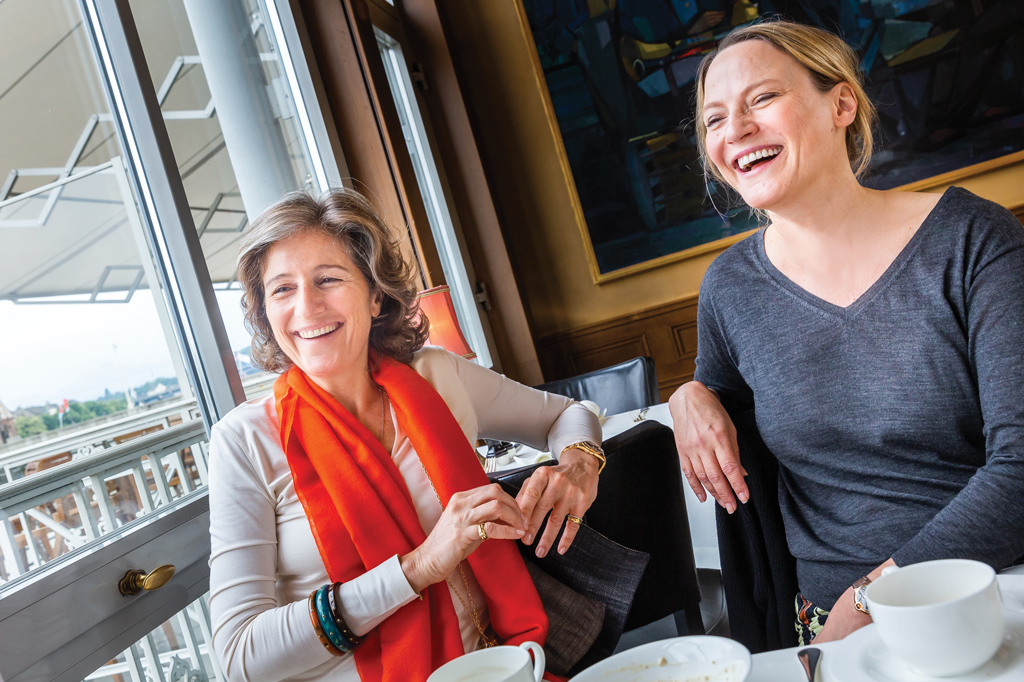[ad_1]
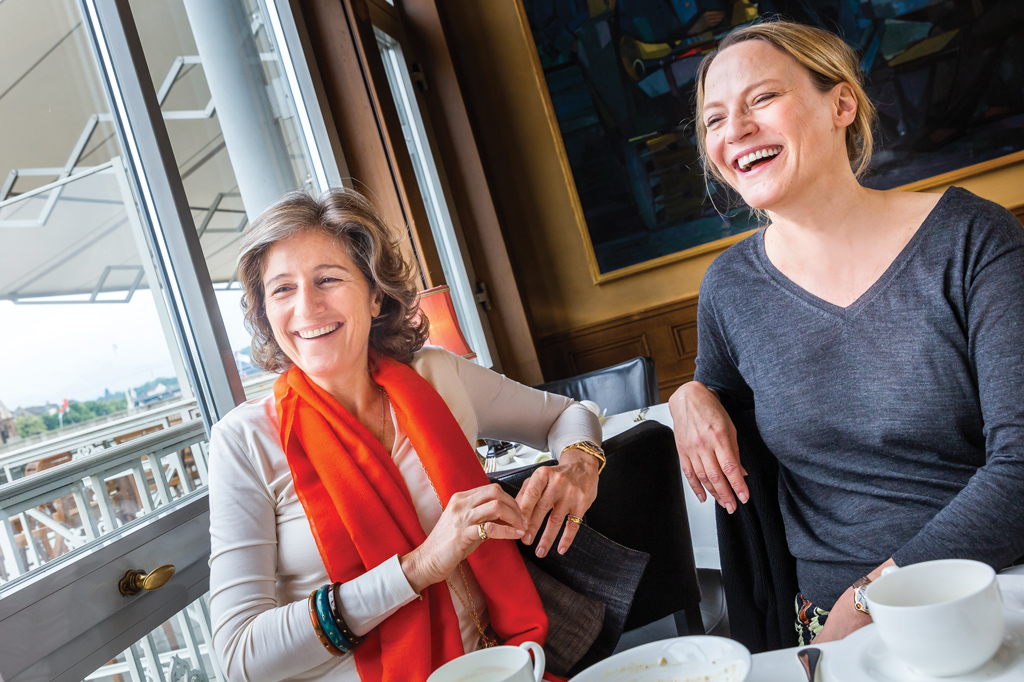
Dominique Lévy and Cheyenne Westphal at Les Trois Rois in Basel, Switzerland.
©SCOTT RUDD
Dominique Lévy began her career in the mid-1980s as an intern at Christie’s before moving for four years to Sotheby’s and then setting out to work as a dealer. She returned to Christie’s in 1999, recruited by François Pinault, then the company’s new owner, to run the first auction house department devoted to private treaty sales. She left Christie’s in 2003 to start her own advisory service in New York, and, two years later, teamed up with fellow dealer Robert Mnuchin for an eight-year run as partners in L&M Arts. They went their separate ways in 2013, and Lévy opened her own eponymous gallery; then, in 2016, she brought on her current business partner, Brett Gorvy, after poaching him from his post as Christie’s chairman and international head of postwar and contemporary art. With locations in New York, London, Zurich, and Shanghai, Lévy Gorvy gallery now works with artists and estates including Terry Adkins, Pierre Soulages, Dan Colen, and Adrian Piper.
Cheyenne Westphal, the German-born chairman of Phillips auction house, started out at Sotheby’s and worked her way up to worldwide head of contemporary art. Based in London, she became known as a rainmaker. In 2008 she oversaw Damien Hirst’s mega-sale of his own artworks, which brought in a whopping $200 million, and in 2015 she was the force behind Sotheby’s most successful contemporary art auction in Europe, a $204.7 million haul. She joined Phillips last year and has already logged the house’s most successful sale ever: a London auction this past March that made $135 million and included a record-smashing $11.9 million painting by Mark Bradford.
ARTnews convened with the two women over breakfast at the storied Three Kings Hotel in Basel, Switzerland, during the 49th edition of Art Basel, the world’s most important fair for modern and contemporary art—and a significant barometer for the global art market. For Lévy, black coffee and an assortment of fruit; for Westphal, green tea, fruit, and yogurt.
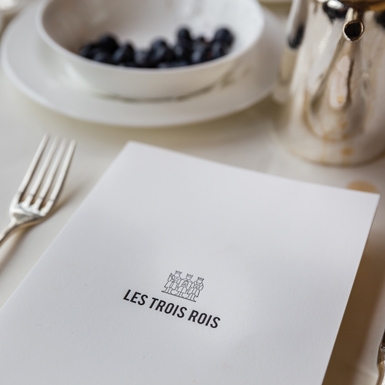
©SCOTT RUDD
ARTnews: As women working in the art world, what are the challenges?
Dominique Lévy: Can we skip that?
ARTnews: At Art Basel yesterday, I was talking with a male dealer, a pleasant conversation, when two men came up. The whole tenor of things changed: there was a fist bump and suddenly I was—
Cheyenne Westphal: Invisible.
Lévy: A boys’ club exchange. We had lots of those in the booth yesterday. Also, somebody came up to me and said, “How does it feel to be a woman gallerist?” I said, “Do you mean how does it feel to be a gallerist?” I can’t go into this dichotomy, especially being in a business partnership with a man. You see collectors who come to the booth and prefer to have the final negotiation with a man. But if I go into it, it will prevent me from being who I am and acting naturally, so I decided to go away from woman artist, woman dealer, woman director—it was getting unbearable. I don’t feel I’m a woman gallerist. I’m a gallerist.
Westphal: I don’t fist bump, I can tell you that. [Laughs.] That’s not how we need to greet each other.
ARTnews: Cheyenne, you’re on the advisory board of the Association of Women in the Arts . . .
Westphal: Yes, I think that’s important. When moving through my career, it wasn’t the sort of thing I thought of doing “as a woman.” But it is important for women starting out to see other women at the top of their game. They see that it’s a possibility, a path they can take.
Lévy: But is it part of your identity?
Westphal: More than I was aware of. I was at Sotheby’s for 25 years. When I left, people took the opportunity to tell me things—a bit like being at your own funeral. It came up quite a bit that I was a role model. I do take it seriously when I speak to younger staff.
Lévy: Recently I was asked to do the commencement speech at the Sotheby’s Institute of Art, and it was a majority of women. All through my speech, there was no part about being a woman. Two of the young students came to me after and said, “You didn’t talk about what it meant to be a woman!”
ARTnews: Dominique, the people you’ve spoken of as your mentors—Simon de Pury, Anthony d’Offay, François Pinault . . .
Lévy: . . . have been men. But my ideas have come from looking at people like Peggy Guggenheim, Paula Cooper, Marian Goodman—all women. My imaginative mentors, the ones who fuel my dreams, are women.
Westphal: That’s what’s important. And by simply doing what you’re doing, you are fulfilling that role. You don’t have to talk about it in terms of gender.
ARTnews: In terms of the market, in an interview on the Art Basel website, the economist Clare McAndrew said that in 2017 the global art economy grew for the first time since 2014, with a 12 percent rise over 2016. Where do you feel the market is now, after the big May auctions in New York and the first day of Art Basel?
Westphal: Phillips’s numbers have been going upward strongly, and we had a fantastic beginning to the year. We had our strongest sale in March in London. What I loved about that sale was that we had the ability to curate the 21st century and bring things together because we don’t have fixed categories like the other auction houses. There was a fantastic early Matisse that hadn’t been seen for almost 100 years, and a Picasso that made $57.8 million; at that same sale, we made world records for Mark Bradford and Rudolf Stingel. The New York May sale season—it was difficult to take in two weeks of Frieze and then the Rockefeller sales at Christie’s. It was a difficult season to work. You got people really on, but you had to keep their concentration for a long time. It’s draining. But there were a lot of things in May that I thought were interesting. There is a reevaluation of artists who haven’t been in a particular price category yet. At Phillips, we had a Motherwell painting from 1971, which sold for $12.7 million.
Lévy: You also had a Basquiat.
Westphal: That painting [Flexible from 1984, which sold for $45.3 million] came from the Basquiat estate. That was proper auction magic—something great that doesn’t carry a guarantee, that has a really decent estimate, and just went poof! But there were also things that were much more difficult to sell this time around. When you get to the $10 million-plus level, you have to have it right in terms of artists breaking into that level or in terms of the quality of the works.

A Martin Kippenberger on offer in the Phillips salesroom in June 2018.
COURTESY PHILLIPS
ARTnews: An adviser who works with clients in the $50 million-plus stratosphere told me he was surprised there was so little competition. Is it thin at the top?
Lévy: I thought last month’s auctions were a tale of two worlds. You had the sweet spot between $3 million and $6 million . . .
Westphal: Lots of bidding there.
Lévy: A ton! That scope was deeper and wider than we’ve ever seen. Honestly, we dealers in our art fair booths couldn’t sell some of these objects at those prices. And then you had what I call the very strange top-tier guarantees. I was surprised to see how little competition there was and how many works went to the guarantor. That makes me, as a dealer, question the whole value of an object. Not the market—the market is there. As we saw yesterday at Art Basel, it’s very deep, very healthy. But if an auction house puts a guarantee at $10 million and you have only one bid, at $10 million, what is truly the value of that work of art? It could have been $6 million, for all we know. This is incredibly troubling, and it had a ripple effect at the fair yesterday. People were so tough in their offers.
ARTnews: How so?
Lévy: There was much less back and forth. There was much more walking away from a deal if they didn’t get it at the price they wanted. And the prices being offered were not the prices of the most recent record. They were much more looking at the estimates of 6 to 12 months ago. There were so many Joan Mitchells at the fair, and nobody was really looking at the price of that single painting at Christie’s [Blueberry (1969), which sold for a record $16.6 million in May]. They were looking at the market in general. All of the good Mitchells in the fair sold, but they didn’t sell at the $16 million level—they sold where the market was six months ago. I think we’re really in an intelligent market for the first time in five years.
ARTnews: Is that a good place to be?
Lévy: We’re getting to a place where sellers have to get real. Auction houses have to be much more responsible. They cannot just stuff a guarantee to one person. Flexible was unguaranteed, fresh, and you saw fierce competition. I believe whoever bought it got a fantastic bargain. If there had been less choice that week, that painting would have gone to $60 million. It is one of the top Basquiats in the world.
Westphal: What you said about the two tiers is true. And you see this in the day sales, where the sell-through rate is the highest it’s ever been.
Lévy: And by the way, that level is where auction houses make money.
Westphal: You’re absolutely right. For Phillips, that $3 million to $6 million level is still our sweet spot. And we’re seeing a lot of new people. It is very difficult at the top price levels. Sellers’ expectations are very high. And competition between houses can be fierce.
Lévy: The market is confused. When the guarantor ends up buying a Picasso at a Sotheby’s Rockefeller sale against no competition, you don’t really know if they wanted it or not.
Westphal: Then you get price explosions in artists, like when Cecily Brown paintings jumped up. After that, the number of Cecily Browns we’ve been offered . . .
Lévy: It’s ridiculous.
Westphal: We just go, “No, we can’t.” Of course, we won’t say $1.5 million to $2 million anymore. We’d be comfortable probably going up to $2.5 million, but we can’t say $6 million.
Lévy: Even at $2.5 million, suddenly you have ten of them. And then you go back to a period where Cecily Browns can’t sell.

Willem de Kooning, Untitled XXI, 1975, was sold by Lévy Gorvy in March.
©THE WILLEM DE KOONING FOUNDATION / ARTISTS RIGHTS SOCIETY (ARS), NEW YORK
ARTnews: How is the market different in Asia? Phillips opened a new Hong Kong office last March during the Art Basel fair there, where, Dominique, you and Brett Gorvy sold a $35 million de Kooning painting belonging to Paul Allen, and you opened an office in Shanghai last fall.
Westphal: When I first arrived at Phillips, we had a relatively modest team of 18 people in a small office there, and a year later we are in the St. George’s building, on the 14th floor. You come in, and you know you’re in Phillips: the space is similar to what we have in London. Our staff has gone to 50, and we’ve hired extensively across Asia, not just in Hong Kong. In May we had our most successful auction in Hong Kong. It’s moving very quickly. In Asia, the desire to collect and the breadth of buying are phenomenal. We cross-market in our sales. We offer design with Western and Asian art, and that works well. We are seeing new bidders in significant numbers.
ARTnews: You’ve talked about seeing young collectors in their twenties.
Westphal: Yes, it’s crazy! I think Asian buyers are more comfortable at auction—or they’re comfortable if they think they are dealing with a brand.
Lévy: That’s what happened with de Kooning. To gain trust for a private sale takes much more work. Payments take [a very long] time, and capital control is an issue. We’ve opened, and we’ll continue to grow. We now have a team of six people, and the Asian team makes a difference. You cannot penetrate China or think about going to Korea or elsewhere in Asia without having people on the ground. That is the true investment. Our approach there has been to complement what the auction houses are doing. We’re not going there with huge galleries and sending second-tier work by great artists. We’ve decided we need to go with an advisory house and form relationships with a small number of relevant collectors, and to bring works of art there to a private showroom. It’s an approach that’s slightly different and really mirroring and complementing what the auction houses are doing.
Westphal: In China taste changes so quickly. Three years ago, it was blue-chip names, maybe reported at slightly lower price points. The range of artists now is extraordinary. In Hong Kong, the opening of the H Queen’s building [a development that plays home to recently opened spaces for the mega galleries David Zwirner, Hauser & Wirth, and Pace] was quite special. There was a stunning exhibition of collector J. Tomilson Hill’s Christopher Wool paintings on the ground floor. Then you worked your way up, and gallerists put on either good or very commercial shows. The building was buzzing.
Lévy: I wouldn’t want to be in that building. To me it’s such a glitzy, flashy image—it will work for a bit [but] the building feels like a department store, or a VMA award show.
Westphal: The level of clients I saw in there was phenomenal.
Lévy: I totally agree. It felt a bit like SoHo when it had all the galleries. It’s an energy that’s important. There were a lot of Asian collectors at the fair yesterday, though less than last year. In rethinking where we are right now in terms of auctions, galleries, and advisers, Asia is a big part of that. But we can’t just grow and grow. There has to be some thoughtfulness, and I hope that’s what we’ve learned from the last auctions.
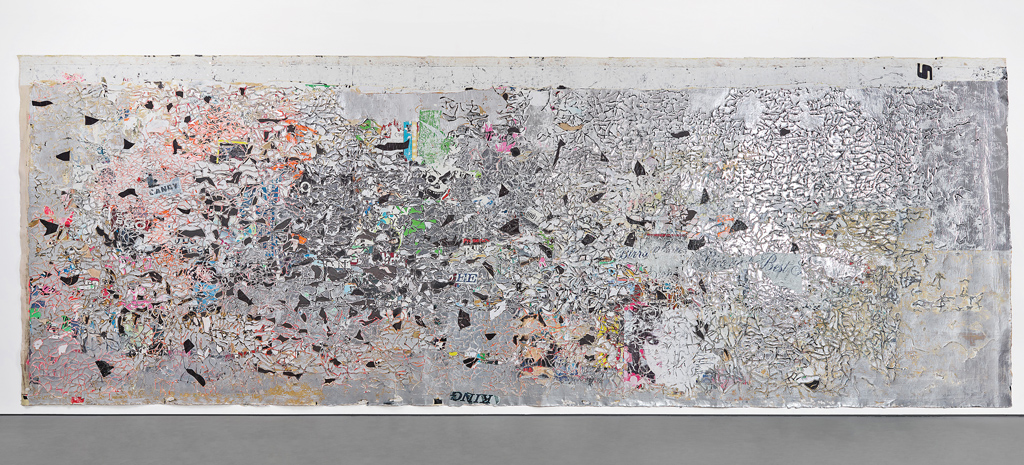
Mark Bradford, Helter Skelter, 2007.
COURTESY PHILLIPS
ARTnews: How are major galleries and auction houses changing? Dominique, you recently hired Andreas Rumbler, who was a chairman at Christie’s for years, to provide advisory and consulting services to collectors.
Lévy: Andreas is a partner for a Swiss entity in Zurich. New York and London [where we have galleries] are all about the artist, the estate, the art. But around the world, we feel that what we are not managing to serve properly is more of a client advisory. We now have that in Asia, and we’re doing it in Zurich—a small, private, beautiful showroom that is more client-centric than art-centric.
Westphal: At Phillips, because we want to have a firm position in the 20th and 21st centuries across everything we do, it is important to see what we can do with those categories that really attract buyers in the field. And of course we do private sales—sorry, Dominique.
ARTnews: But it was Dominique who ran the very first private sales department at an auction house. She started it!
Lévy: I know!
Westphal: We do selling exhibitions. And we work with curators, like [former Brooklyn Museum director] Arnold Lehman, who bring a different element to the way we look and the way we communicate with clients. There really are changes in galleries and auction houses.
ARTnews: Lately, some respected art writers and editors have gone to galleries and auction houses to produce content.
Lévy: But we are still commercial entities. We have all hired content people, indeed, to share stories and information that make things more meaningful. I don’t think it’s intellectual content. That’s still reserved for museums, research, and good journalism. And I still believe there’s a fundamental difference between an auction house and a gallery—thank god. That’s why I feel that when Sotheby’s wants to start representing artists and estates, it’s very dangerous territory. I don’t think they should do it—I don’t think they can do it. And I think that any artist who would go there would be selling their soul to the devil. Auction houses and galleries are complementary but still very separate. We work with curators, writers, and journalists, but we cannot pretend to be a museum.
Westphal: But your shows are often on that level. What you just did in London was phenomenal, with Polke, Lichtenstein, and Gerald Laing.
Lévy: Thank you. We try to excel. But in the museum world, there is an amount of research and depth. We can do these shows, and they are meaningful, but it’s still just two rooms. If it was a museum, it would be a whole floor. I’m trying to keep “the museum” for the museum, because for multiple reasons it’s becoming harder and harder for museums to mount extraordinary shows. And it’s becoming easier for us galleries because we can act quickly and our relationships are deep with museums and collectors.
ARTnews: Phillips seems to have doubled down on being a specialized auction house.
Lévy: Phillips has specialized—this is very important. I think finally Phillips has taken a niche that was always available.
Westphal: We are still a relatively small organization, so we have to focus. If we want to be really good in the 20th and 21st centuries, that’s what drives it right now. Auctions are important—that’s our business, that’s our calling card, so a lot of our energy has gone into making every auction better and showing what we can do. That’s why I point to the March sale—because that is the way I’d love to be able to show the art of the century.
Lévy: The great Peggy Guggenheim model.
Westphal: I come from working in big structures, and I know the [pressure to] produce sales every week to keep the beast happy. We don’t have that.
Lévy: I think you have a market effect today that is enormous. Under the leadership of Ed [CEO Edward Dolman], Phillips is changing in our eyes. We as advisers or dealers or collectors are looking at Phillips in a completely different way.
Westphal: We have a niche. We have 30 works in an evening sale and, at any given time, maybe 200 in a day sale. You go into the other houses and you might find 2,000 works for sale in that same period of time. That’s overwhelming. Our size allows us to have one-on-one contact. It also allows us to invest in areas that will give us an edge going forward. We are investing heavily in technology, and it’s working amazingly well.
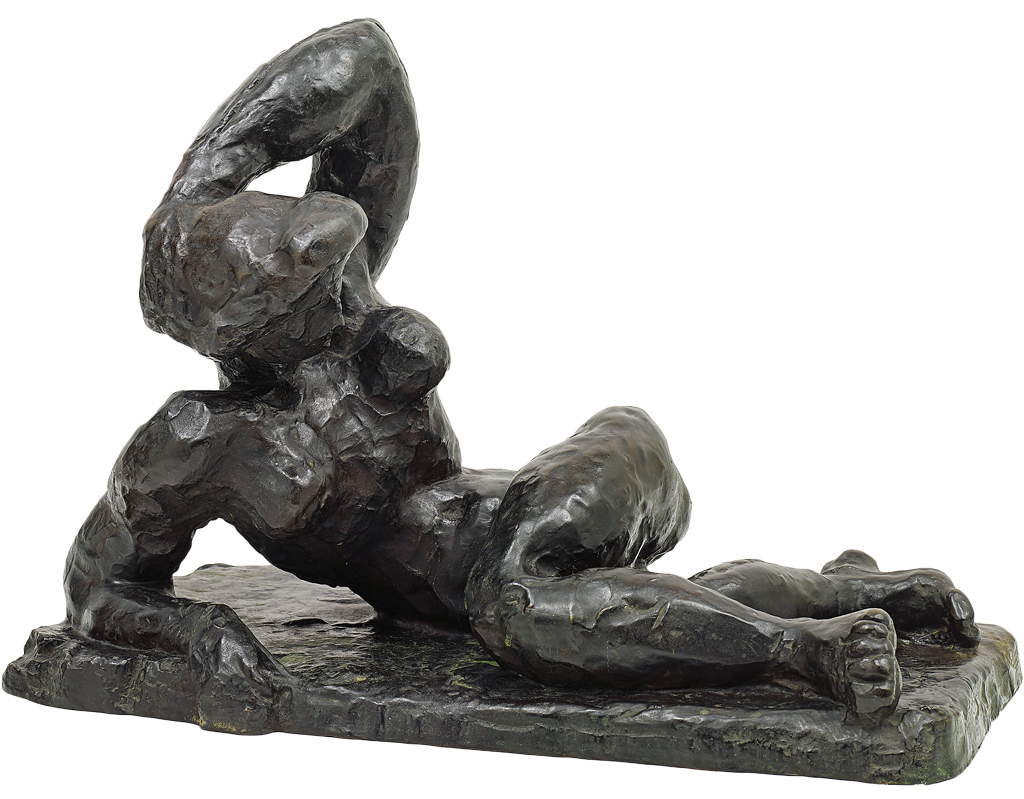
Henri Matisse, Nu allongé I (Aurore), 1907, which was sold by Phillips earlier this year.
COURTESY PHILLIPS
ARTnews: There’s a lot of talk about small and mid-tier galleries struggling to survive in the art fair age. In April, David Zwirner suggested that the big galleries should help subsidize smaller ones at fairs—which might be great marketing for him, by the way.
Lévy: Yes and no. I thought it looked very patronizing.
ARTnews: Do you feel a responsibility to support the art ecosystem? Or are you more laissez-faire like Larry Gagosian, who recently said, “I think it’s a pretty good system from my perspective.”
Lévy: It’s not about supporting the art ecosystem. I feel a deep responsibility to support art, whether it’s artists I believe in, publications, museum shows, poetry, creative conversation. I don’t feel a responsibility to support another gallery. I think that responsibility [falls on] the fairs. I feel that [Art Basel director] Marc Spiegler should stop having all the blue-chip galleries in the center and all the secondary-market and contemporary galleries [elsewhere]. I would like to see a gallery I have never heard of with a great project right in the rotunda, on the main floor. It would excite me! I’d like to be next to that gallery!
ARTnews: Are there ways in which you operate that are taking away from smaller galleries?
Lévy: Absolutely not. It’s giving back when we team with Thomas Erben, a tiny gallery, on Senga Nengudi. We changed the relationship with her work and museum shows, and we kept the relationship with Thomas. Now, there are galleries that say to an artist, “If you come with me, it’s me worldwide and only me.” That’s counter to my instincts, my core beliefs. I believe an artist should be in many galleries, so as to have many conversations, many dialogues. This idea of being in one gallery and showing in the same spaces, with just different locations, is sinister for artists. If you ask me where I’d like to go—where I think [the whole system] will go—it’s going to be much more fluid and collaborative. Everyone is craving that. Right now, everyone is holding on, but at some point, nobody will have the muscle to hold on. In the next five years—because of the auction houses expanding, technology, globalization—I see much more fluidity. I pray for that, because it will foster collaboration.
ARTnews: Cheyenne, do you think Phillips has a responsibility to the ecosystem?
Westphal: We do. In auctions you have to be careful what you take in. It’s not good for us to have 20 percent of a sale unsold because we’re taking artists in who can’t be sold at auction right now. We have good people at Phillips who focus on that. They have to be close to the market, and close to the artists. We do want to present the best of what is out there. If we do that well, it becomes interesting, because we’re creating a way for people to experience young art that can be bought easily. We are dealing with a much larger audience. Online bidding means a huge amount in any sale category below $10 million. For Phillips, online registration in 2017 surpassed regular registration, meaning bids on the telephone, absentee bids, and so forth. Eighty percent of our editions sale is presold. If you’re on our app, you can buy now. In the last editions sale, we had 1,000 online registrants participate.
Lévy: That’s enormous!
Westphal: And now that happens in a very fluid way with the auctioneer.
Lévy: But we have to keep a difference between the art and the art market. I think the auction houses have a market responsibility. As a gallery, we have a market responsibility to foster and nourish our artists or our estates. I think there’s a fine line that we don’t talk enough about. The press is generally very focused on the market and mixes galleries and auction houses. But, although we are complementary and our overall responsibility is actually united, our responsibilities are very different.
Westphal: I agree. What you’re doing with artists and estates is work that demands complete and long-term focus.
Lévy: Patience!
Westphal: That’s why I don’t see that happening at an auction house either, because I know that it takes not just somebody who works with an artist or builds up his exhibition history or relationships with museums over a period of time. It’s a different expertise.
Lévy: There has to be some mess. I got lost upstairs in Basel and bought an artist I had never even heard of. It was from a gallery I know well, that I go to always. The joy of discovery—we have to keep that!
ARTnews: Would you agree or disagree that there are fewer real collectors today, meaning connoisseurs rather than investors?
Lévy: Disagree.
Westphal: I also disagree. I think we’re seeing people putting amazing collections together.
Lévy: And being excited, engaged.
ARTnews: Are they buying with their eyes and not their ears?
Lévy: Sometimes, but sometimes both. They’re both valid. You can buy with your eyes, but when you hear a museum is getting ready for a retrospective, is that a wrong kind of information that prompts you to buy or to commit? We have 90 percent real collectors. I had extraordinary conversations at the booth. They didn’t all lead to a sale, but they were fantastic.
Westphal: I think 90 percent is high, but I can completely see it when I look at your program. At auction you see a broader [range] of patrons. You see a lot of serious collectors putting collections together, often from younger generations. But we know that we can’t take [investment] value out of an art discussion. I look at that myself, in my own collecting. To take that away from anybody’s thinking I think is just impossible.
A version of this story originally appeared in the Fall 2018 issue of ARTnews on page 44 under the title “Dominique Lévy & Cheyenne Westphal.”
[ad_2]
Source link

